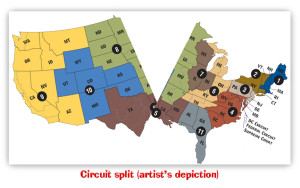We post news and comment on federal criminal justice issues, focused primarily on trial and post-conviction matters, legislative initiatives, and sentencing issues.
Today, some shorts… just in time for warm summer weather.
SUMMER’S HERE – TIME FOR SOME SHORTS
Shocking News: BOP Healthcare Found Deficient – A report issued last week by the Dept of Justice Inspector General found that the BOP has failed to screen over a third of at-risk inmates for colorectal cancer (CRC). Between low screening offers and inmate refusals, less than half of average-risk inmates had a completed annual CRC screening.
 What’s more, out of a sample of 327 inmates, the IG found that around 10% had no documented follow-up after testing positive for CRC. Also, the Report found, the BOP lacked timeliness metrics for access to a colonoscopy for inmates with a positive CRC screening. The IG reported that “inmates in our sample waited an average of 8 months between a positive CRC screening and a colonoscopy.”
What’s more, out of a sample of 327 inmates, the IG found that around 10% had no documented follow-up after testing positive for CRC. Also, the Report found, the BOP lacked timeliness metrics for access to a colonoscopy for inmates with a positive CRC screening. The IG reported that “inmates in our sample waited an average of 8 months between a positive CRC screening and a colonoscopy.”
During the period covered by the Report, there were about 38,000 federal inmates who fell in the age range and “average risk” level for CRC. About 13,600 of them were not offered a screening, according to the Report.
BOP Director William K. Marshall III took time from being excited about a billion-dollar rebuild of Alcatraz (see below) to blame “longstanding staffing issues” for compromising efforts to screen inmates for colorectal cancer in certain facilities.
DOJ Inspector General, Evaluation of the Federal Bureau of Prisons’ Colorectal Cancer Screening Practices for Inmates and Its Clinical Follow-up on Screenings (Report 25-057, May 20, 2025)
Washington Post, Prisons bureau failed to screen inmates for colorectal cancer, watchdog says (May 20, 2025)
Sentencing Commission Releases 922(g) Data: About 7,500 people are convicted every year for 18 USC § 922(g) offenses, the US Sentencing Commission reported last week.
 The USSC said men accounted for 98% of all convictions, with 58% of them being black, 21% white and 17% Hispanic. The average age for defendants at conviction was 36 years old.
The USSC said men accounted for 98% of all convictions, with 58% of them being black, 21% white and 17% Hispanic. The average age for defendants at conviction was 36 years old.
The defendants were overwhelmingly US citizens (95%). About 24% were Criminal History Category III and another 24% fell into Criminal History VI (the highest category).
USSC, Section 922(g) firearm offenses (May 22, 2025)
BOP Director Calls Rebuilding Alcatraz “Exciting Opportunity”: BOP Director William K. Marshall III, who has less than $200 million in his FY 2025 budget to make $3 billion in infrastructure repairs to existing prisons, told Fox News a week ago that his team is actively exploring the possibility of reopening Alcatraz, the 330-bed penitentiary on an island in San Francisco Bay.
 Marshall called the project – a late-night idea President Trump hatched late on his inaptly-named “Truth Social” site a month ago – an “exciting opportunity” and one that aligns with the Trump administration’s law-and-order priorities.
Marshall called the project – a late-night idea President Trump hatched late on his inaptly-named “Truth Social” site a month ago – an “exciting opportunity” and one that aligns with the Trump administration’s law-and-order priorities.
Last week, KTVU-TV reported that estimates to make the repairs needed to reopen Alcatraz as a prison are close to $1 billion, plus another $40 million to $100 million a year in maintenance.
Corrections1, BOP director: Reopening Alcatraz is an ‘exciting opportunity’ (May 23, 2025)
KTVU, Bureau of Prisons director ‘excited’ about reopening Alcatraz as max-security prison (May 23, 2025)
– Thomas L. Root



























